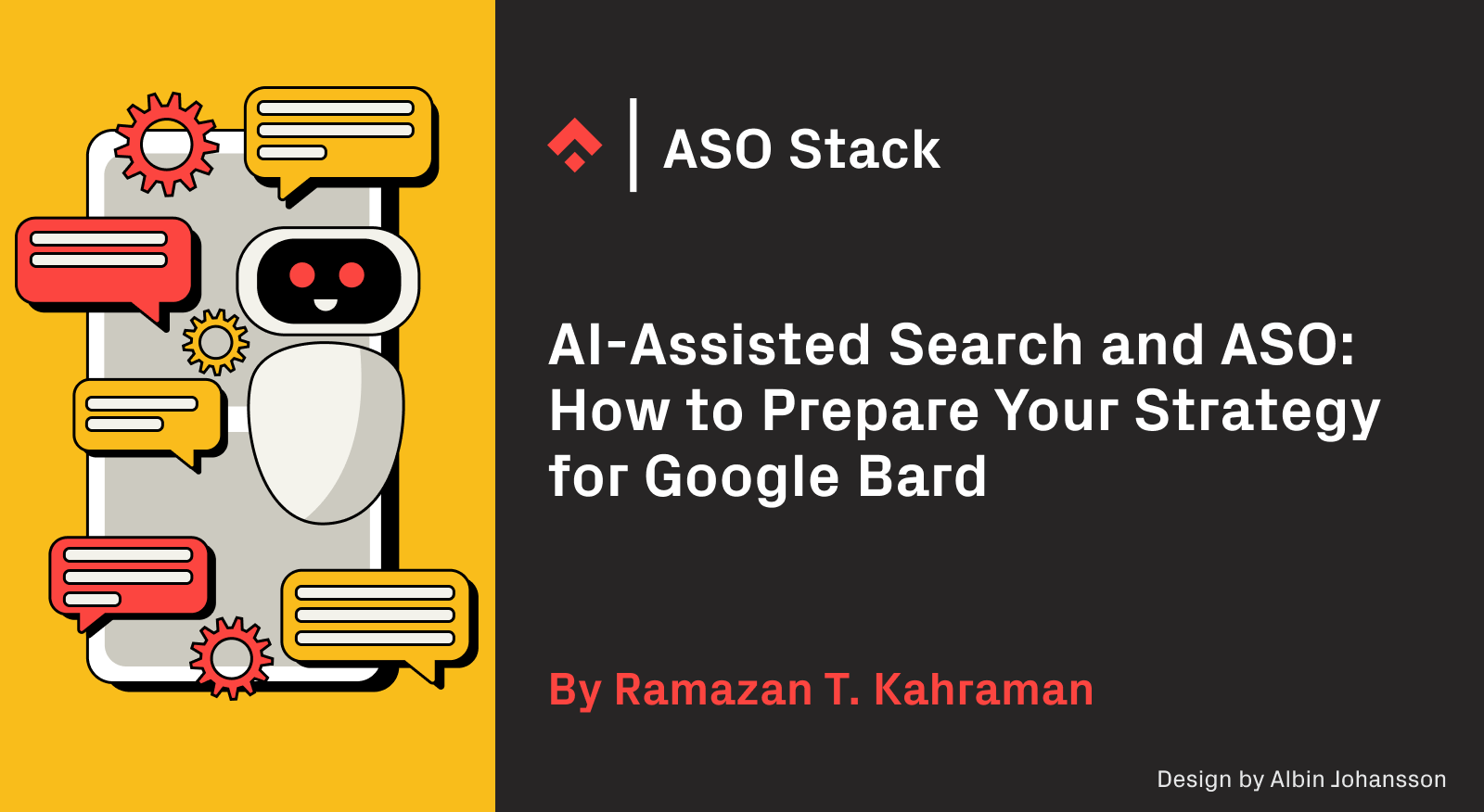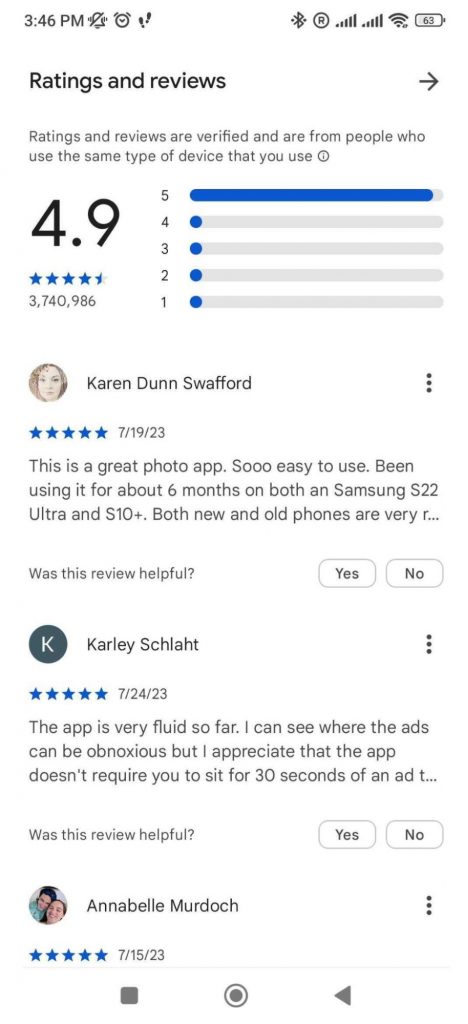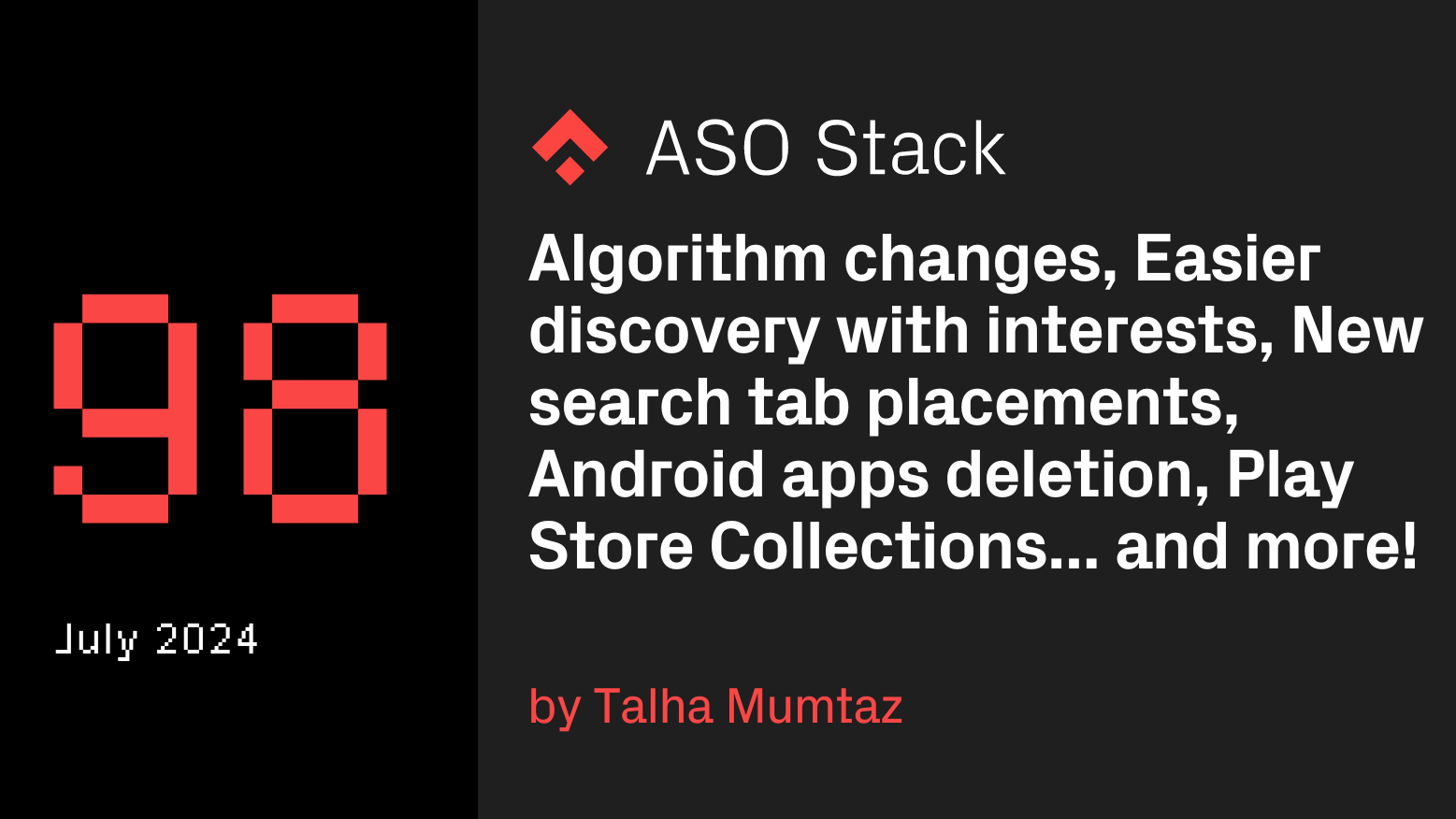
Phiture’s AI Labs is our playground where Engineers, Data Scientists, Designers, and Marketing Experts create new AI-powered growth tools and strategies. You can find out more here.
The emergence of AI-driven tools has ushered in a new era of user acquisition opportunities for app and game developers. One trend ASO Managers must be aware of is the anticipated importance of AI search results. This began with Bing’s integration of ChatGPT, and is likely to only accelerate as Google’s Bard develops.
In this article, we explore how ASO Managers can prepare for future success in the era of AI-assisted search and discovery, honing in on the areas likely to be of crucial importance for Google’s Bard. Making proactive strides to optimize your app descriptions now, or exploring other such optimization strategies, could prove beneficial in the long run.
What is Google Bard, and why is it important?
With the advent of ChatGPT, engaging with AI has become an integral part of everyday life. Its development and subsequent introduction of numerous features has encouraged tech giants to integrate AI support into their products. Microsoft led the way by integrating ChatGPT into its Bing search engine. This move drew millions of users to Bing, eager to explore this novel search experience. Google quickly followed suit, unveiling its innovative chatbot, Bard.
Google Bard is still in the early stages of development and is only available as an experimental test version, although you can sign up now for early access on Google’s website today. Just like any beta version, Google intends to use this testing phase to improve Bard’s quality, accuracy, and speed, with a view to integrating this tool into its search function. This is very important: the results Bard recommends will likely be listed above all other Google search results, with this integration primarily affecting web search.
Source: Google
The benefits of preparing for AI
Optimizing app descriptions by following SEO best practices has always been an ASO (App Store Optimization) strategy. This is because users can find your app in web searches too, and it’s for this reason, optimizing your product and app descriptions to appeal to Google Bard now will likely benefit organic user acquisition.
A previous Google release illustrates this. Before the era of AI chatbots, a significant innovation in Google’s Search Engine was the introduction of the voice search feature. By incorporating a microphone in the search bar, users could conduct voice-activated searches. This feature caused a shift in the SEO landscape, which compelled copywriters to modify their strategies.
Websites that focused on voice searches started drawing in millions of users, reflecting the benefits of moving quickly in light of new technology. Similarly, with the dawn of the chatbot era, SEO has broadened once again to include chatbot optimization.
The principles of SEO optimization – now encompassing voice search and chatbot interactions – are as applicable to apps as they are to websites, shaping how we approach visibility and engagement in the digital space.
 A screen grab from Google Bard, listing PDF scanner apps
A screen grab from Google Bard, listing PDF scanner apps
Optimizing for Bard
While it remains to be seen how exactly Bard will present search results, it’s anticipated that it may use app store pages as references in its responses. This means that ensuring your app’s content earns a featured position becomes even more essential, while developing quality content that answers user searches is key.
Source: Google Bard
This is already the day-to-day work of an ASO Manager, but there are some activities that can help you further optimize App Store and Google Play Store pages for Bard.
Use Natural Language Processing (NLP) to create App Descriptions that are relevant and engaging. NLP is all about the interaction between computers and human languages. Simply put, the descriptions and other text content on your app’s store page need to be written with search intent and relevancy in mind. It’s not enough to create app descriptions filled with keywords – the description should also comprehensively answer potential queries from users.
Ensure you’re using app-relevant keywords that are easily comprehensible. Identifying the top keywords for your app and including them in your app’s description, title, and other relevant fields is crucial because keywords are essential for ASO. As Bard is a large language model trained on a massive dataset of text and code, it has the capability to understand a broad range of keywords and phrases. For example, if your app is a 5-star Hotel Booking App and the phrases “5-star hotel” and “booking” appear in your description and title, Bard is more likely to recommend your app when a user asks for “What are some 5-star hotel booking apps?”

Source: Google Bard
Regular app updates are also likely to be important. Consistent updates indicate that an app is active and being maintained, which makes it more likely that AI systems, like Bard, will recommend it. By regularly adding new features, fixing bugs, and improving the user experience, your app will likely be more visible in the search results.
Encourage user reviews. Positive reviews not only influence potential users but also play a role in your app’s visibility, with an influence on app ranking.
 Source: Google Play Store
Source: Google Play Store
Include screenshots and videos. Visual elements help users to quickly understand what your app does and how it looks. By including screenshots and videos, you’re providing a comprehensive preview of your app. It’s not yet clear how Bard will interpret these, but they remain important for user experience.
While Google Bard presents a big shift in search, the age-old rule of creating quality content remains unchanged. The quality and relevancy of your app’s store page content can greatly influence its visibility and ultimately, its success.
Source: Google Bard
What will Bard use to order search results?
When it comes to analyzing app store pages, Bard is likely to incorporate several factors that users commonly consider while picking an app. Using the example of a PDF scanning app, here we give a breakdown of the likely factors that Bard is likely to focus on when evaluating apps.
- Features: One of the first things that Bard is likely to consider when looking at app store pages is the list of features provided by the app. For example, does the PDF scanning app provide tools like automatic cropping, text recognition, and cloud storage? Does it allow users to easily share the scanned files or edit them post-scanning? These factors all play a role in the app’s user potential and its likely subsequent placement in Bard’s recommendations.
- Reliability: The reliability of the app is another important factor. Does it consistently produce high-quality scans without glitches? Is the app frequently updated to ensure it’s compatible with the latest operating systems? Bard can gauge these factors through user reviews and update histories.
- User Reviews: Reviews left by other users provide valuable insights about the app’s performance and reliability. Bard is capable of analyzing these reviews to form an opinion about the app. For instance, are users generally happy with the app? Or are there recurring complaints about certain aspects of the app?
- Price: Bard will likely consider the price of the app or if it requires a subscription. Free apps or those that offer valuable features at a reasonable price would likely rank higher. Information about the pricing structure, free trials, in-app purchases, or subscription details should be clearly provided in the app description.
- Storage: An app that provides cloud storage for saving scanned documents could be more useful to users than one that allows storage only on the device. Bard might give preference to apps that offer the flexibility of cloud storage, which would also facilitate easy sharing and accessibility of the scanned documents.
- Interface: The design and layout of the app’s interface are crucial for user experience. Apps with a clean, straightforward interface are likely to be more user-friendly than ones with a cluttered or complicated layout.
- Security: For an app that handles potentially sensitive documents, security is a significant concern. Bard would likely consider the security features provided by the app, such as password protection for documents, encryption of data, etc.
 Source: Google Bard
Source: Google Bard
By carefully analyzing these aspects, Google Bard can provide more accurate and user-centric recommendations for PDF scanning apps, making the selection process easier for the user. The highest ranked app, in the end, would depend on the user’s individual needs and preferences, as interpreted and understood by Bard.
Quality products trigger chatbot result algorithms
In addition to these elements on your product store page, a top-quality product will of course be more favored – something that has been confirmed by our own small scale experimentation, and is likely to be gleaned by Bard from the reviews. While a variety of factors go into making a quality product, a few essential factors are likely to appeal to AI, centring on ease of use.
A user-friendly interface that’s intuitive and easy to navigate is crucial. This includes clear labels for menus and buttons, and a design that caters to both tech-savvy and less technically inclined users is essential. Instructions provided within the app should be comprehensible and concise, guiding users on how to use the app effectively. The app should respond promptly to user interactions without noticeable lag or delay, ensuring a seamless user experience. The presence of clear and informative error messages is vital. These messages should detail the encountered problem and guide users toward a solution.
Ideally, an app should have a short learning curve, enabling users to grasp its functionalities quickly and effortlessly. The app should offer enough flexibility to allow users to personalize the experience according to their needs. The level of support offered by the app is important. Developers should note user feedback and provide helpful troubleshooting information, ensuring users can resolve issues effectively.
Conclusion
In conclusion, ASO Managers should be preparing now for the impact of AI chatbots on organic acquisition. Our initial experimentation highlights the fundamental importance of developing a high-quality app to secure a position within chatbot search results. This should be the aim of Product Teams anyway, but there are also a number of initiatives ASO Managers can undertake in anticipation of the importance of Google Bard.
Before you go:
- AI – naturally – was the hot topic at the 2023 ASO Conference. You can watch the recordings of all the main stage discussions here, many of which touched upon the impact of ASO.
- The ASO evolution is continuing and the future promises to bring exciting developments in mobile growth. To help you navigate this ever evolving field we have updated the ASO Stack. This marks the third edition since its first publication in 2017. The updated ASO Stack is more user-experience-centric, interconnected, strategically relevant, and forward-thinking, and reflects the latest updates from both Apple and Google. You can get the framework here.
- Recently, the advent of AI has unlocked the ability for many companies to make sense of their reviews data. However, if processing time and resources allow, it might make more sense to use NLP directly to analyze your reviews, especially if they are more subtle or nuanced. Read our new White Paper to find out more.





















